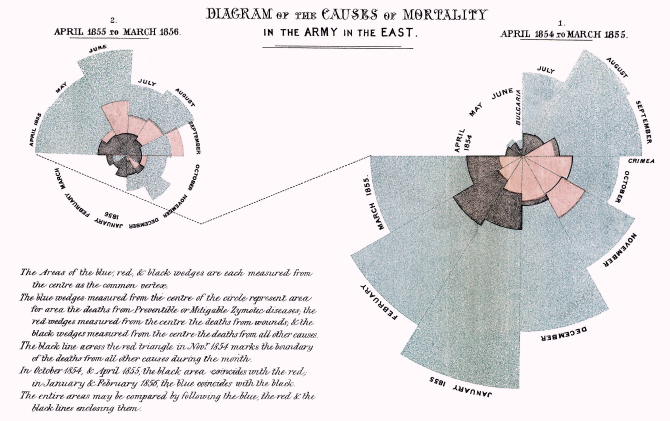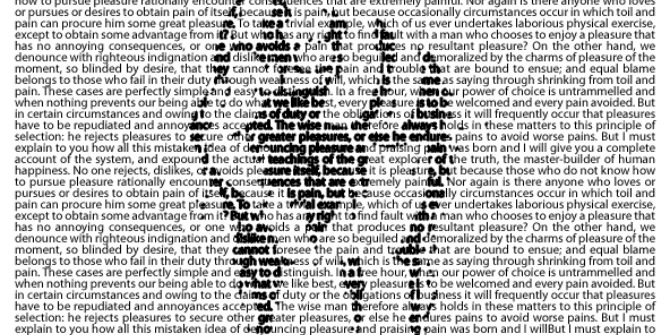 Countering the claim that failed replications merely reflect the underlying truth of the scientific process and are not a matter of concern, Andrew Gelman argues that actually, the process is largely broken and we are in danger of dismissing the value of replication efforts. Current practice, centered on publication thresholds, is not filtering out poorly designed and executed studies.
Countering the claim that failed replications merely reflect the underlying truth of the scientific process and are not a matter of concern, Andrew Gelman argues that actually, the process is largely broken and we are in danger of dismissing the value of replication efforts. Current practice, centered on publication thresholds, is not filtering out poorly designed and executed studies.
John Snow points me to this post by psychology researcher Lisa Feldman Barrett who reacted to the recent news on the non-replication of many psychology studies with a contrarian, upbeat take, entitled “Psychology Is Not in Crisis.”
Here’s Barrett:
An initiative called the Reproducibility Project at the University of Virginia recently reran 100 psychology experiments and found that over 60 percent of them failed to replicate — that is, their findings did not hold up the second time around. . . .
But the failure to replicate is not a cause for alarm; in fact, it is a normal part of how science works. . . . Science is not a body of facts that emerge, like an orderly string of light bulbs, to illuminate a linear path to universal truth. Rather, science (to paraphrase Henry Gee, an editor at Nature) is a method to quantify doubt about a hypothesis, and to find the contexts in which a phenomenon is likely. Failure to replicate is not a bug; it is a feature. It is what leads us along the path — the wonderfully twisty path — of scientific discovery.
All this is fine. Indeed, I’ve often spoken of the fractal nature of science: at any time scale, whether it be minutes or days or years, we see a mix of forward progress and sudden shocks, realizations that much of what we’ve thought was true, isn’t. Scientific discovery is indeed both wonderful and unpredictable. But Barrett’s article disturbs me too, for two reasons. First, yes, failure to replicate is a feature, not a bug—but only if you respect that feature, if you take the failure to replicate to reassess your beliefs. But if you just complacently say it’s no big deal, then you’re not taking the opportunity to learn.
 Image credit: Research by Lauren Manning (Flickr, CC BY)
Image credit: Research by Lauren Manning (Flickr, CC BY)
Here’s an example. The recent replication paper by Nosek et al. had many examples of published studies that did not replicate. One example was described in Benedict Carey’s recent New York Times article as follows:
Attached women were more likely to rate the attractiveness of single men highly when the women were highly fertile, compared with when they were less so. In the reproduced studies, researchers found weaker effects for all three experiments.
Carey got a quote from the author of that original study. To my disappointment, the author did not say something like, “Hey, it looks like we might’ve gone overboard on that original study, that’s fascinating to see that the replication did not come out as we would’ve thought.” Instead, here’s what we got:
In an email, Paola Bressan, a psychologist at the University of Padua and an author of the original mate preference study, identified several such differences — including that her sample of women were mostly Italians, not American psychology students — that she said she had forwarded to the Reproducibility Project. “I show that, with some theory-required adjustments, my original findings were in fact replicated,” she said.
“Theory-required adjustments,” huh? Unfortunately, just about anything can be interpreted as theory-required. Just ask Daryl Bem. We can actually see what the theory says. Philosopher Deborah Mayo went to the trouble to look up Bressan’s original paper, which said the following:
Because men of higher genetic quality tend to be poorer partners and parents than men of lower genetic quality, women may profit from securing a stable investment from the latter, while obtaining good genes via extra pair mating with the former. Only if conception occurs, however, do the evolutionary benefits of such a strategy overcome its costs. Accordingly, we predicted that (a) partnered women should prefer attached men, because such men are more likely than single men to have pair-bonding qualities, and hence to be good replacement partners, and (b) this inclination should reverse when fertility rises, because attached men are less available for impromptu sex than single men.
Nothing at all about Italians there! Apparently this bit of theory requirement wasn’t apparent until after the replication didn’t work. What if the replication had resulted in statistically significant results in the same direction as expected from the earlier, published paper? Would Bressan have called up the Replication Project and said, “Hey—if the results replicate under these different conditions, something must be wrong. My theory requires that the model won’t work with American college students!” I really really don’t think so. Rather, I think Bressan would call it a win.
And that’s my first problem with Barrett’s article. I feel like she’s taking a heads-I-win, tails-you-lose position. A successful replication is welcomed as a confirmation, an unsuccessful replication indicates new conditions required for the theory to hold. Nowhere does she consider the third option: that the original study was capitalizing on chance and in fact never represented any general pattern in any population. Or, to put it another way, that any true underlying effect is too small and too variable to be measured by the noisy instruments being used in some of those studies.
 Image credit: WikiProject Statistics icon from Fisher‘s Iris flower data set CC BY-SA 3.0
Image credit: WikiProject Statistics icon from Fisher‘s Iris flower data set CC BY-SA 3.0
As the saying goes, when effect size is tiny and measurement error is huge, you’re essentially trying to use a bathroom scale to weigh a feather—and the feather is resting loosely in the pouch of a kangaroo that is vigorously jumping up and down.
My second problem with Barrett’s article is at the technical level. She writes:
Suppose you have two well-designed, carefully run studies, A and B, that investigate the same phenomenon. They perform what appear to be identical experiments, and yet they reach opposite conclusions. Study A produces the predicted phenomenon, whereas Study B does not. . . . Does this mean that the phenomenon in question is necessarily illusory? Absolutely not. If the studies were well designed and executed, it is more likely that the phenomenon from Study A is true only under certain conditions [emphasis in the original].
At one level, there is nothing to disagree with here. I don’t really like the presentation of phenomena as “true” or “false”—pretty much everything we’re studying in psychology has some effect—but, in any case, all effects vary. The magnitude and even the direction of any effect will vary across people and across scenarios. So if we interpret the phrase “the phenomenon is true” in a reasonable way, then, yes, it will only be true under certain conditions—or, at the very least, vary in importance across conditions.
The problem comes when you look at specifics. Daryl Bem found some comparisons in his data which, when looked in isolation, were statistically significant. These patterns did not show up in replication. Satoshi Kanazawa found a correlation between beauty in sex ratio in a certain dataset. When he chose a particular comparison, he found p less than .05. What do we learn from this? Do we learn that, in the general population, beautiful parents are more likely to have girls? No. The most we can learn is that the Journal of Theoretical Biology can be fooled into publishing patterns that come from noise. (His particular analysis was based on a survey of 3000 people. A quick calculation using prior information on sex ratios shows that you would need data on hundreds of thousands of people to estimate any effect of the sort that he was looking for.) And then there was the himmicanes and hurricanes study which, ridiculous as it was, falls well within the borders of much of the theorizing done in psychology research nowadays. And so on, and so on, and so on.
We could let Barrett off the hook on the last quote above because she does qualify her statement with, “If the studies were well designed and executed . . .” But there’s the rub. How do we know if a study was well designed and executed? Publication in Psychological Science, or PPNAS is not enough—lots and lots of poorly designed and executed studies appear in these journals. It’s almost as if the standards for publication are not just about how well designed and executed a study is, but also about how flashy are the claims, and whether there is a “p less than .05” somewhere in the paper. It’s almost as if reviewers often can’t tell whether a study is well designed and executed. Hence the demand for replication, hence the concern about unreplicated studies, or studies that for mathematical reasons are essentially dead on arrival because the noise is so much greater than the signal.
Imagine a world in which everything was published
A close reading of Barrett’s article reveals the centrality of the condition that studies be “well designed and executed,” and lots of work by statisticians and psychology researchers in recent years (Simonsohn, Button, Nosek, Wagenmakers, etc etc) has made it clear that current practice, centered on publication thresholds (whether it be p-value or Bayes factor or whatever), won’t do so well at filtering out the poorly designed and executed studies.
To discourage or disparage or explain away failed replications is to give a sort of “incumbency advantage” to published claims, which puts a burden on the publication process that it cannot really handle.
To better understand what’s going on here, imagine a thought experiment where everything is published, where there’s no such thing as Science or Nature or Psychological Science or JPSP or PPNAS; instead, everything’s published on Arxiv. Every experiment everyone does. And with no statistical significance threshold. In this world, nobody has ever heard of inferential statistics. All we see are data summaries, regressions, etc., but no standard errors no posterior probabilities, no p-values.
What would we do then? Would Barrett reassure us that we shouldn’t be discouraged by failed replications, that everything already published (except, perhaps, for “a few bad eggs”) be taken as likely to be true? I assume (hope) not. The only way this sort of reasoning can work is if you believe the existing system screens out the bad papers. But the point of various high-profile failed replications (for example, in the field of embodied cognition) is that, no, the system does not work so well. This is one reason the replication movement is so valuable, and this is one reason I’m so frustrated by people who dismiss replications or who claim that replications show that “the system works.” It only works if you take the information from the failed replications (and the accompanying statistical theory, which is the sort of thing that I work on) and do something about it!
As I wrote in an earlier discussion on this topic:
Suppose we accept this principle [that published results are to be taken as true, even if they fail to be replicated in independent studies by outsiders]. How, then, do we treat an unpublished paper? Suppose someone with a Ph.D. in biology posts a paper on Arxiv (or whatever is the biology equivalent), and it can’t be replicated? Is it ok to question the original paper, to treat it as only provisional, to label it as unreplicated? That’s ok, right? I mean, you can’t just post something on the web and automatically get the benefit of the doubt that you didn’t make any mistakes. Ph.D.’s make errors all the time (just like everyone else). . . .
Now we can engage in some salami slicing. According to Bissell (as I interpret here), if you publish an article in Cell or some top journal like that, you get the benefit of the doubt and your claims get treated as correct until there are multiple costly, failed replications. But if you post a paper on your website, all you’ve done is make a claim. Now suppose you publish in a middling journal, say, the Journal of Theoretical Biology. Does that give you the benefit of the doubt? What about Nature Neuroscience? PNAS? Plos-One? I think you get my point. A publication in Cell is nothing more than an Arxiv paper that happened to hit the right referees at the right time. Sure, approval by 3 referees or 6 referees or whatever is something, but all they did is read some words and look at some pictures.
It’s a strange view of science in which a few referee reports is enough to put something into a default-believe-it mode, but a failed replication doesn’t count for anything.
I’m a statistician so I’ll conclude with a baseball analogy
Bill James once wrote with frustration about humanist-style sportswriters, the sort of guys who’d disparage his work and say they didn’t care about the numbers, that they cared about how the athlete actually played. James’s response was that if these sportswriters really wanted to talk baseball, that would be fine—but oftentimes their arguments ended up having the form: So-and-so hit .300 in Fenway Park one year, or so-and-so won 20 games once, or whatever. His point was that these humanists were actually making their arguments using statistics. They were just using statistics in an uninformed way. Hence his dictum that the alternative to good statistics is not “no statistics,” it’s “bad statistics.”
 Image credit: Baseballs by Ian Ransley (Flickr CC BY)
Image credit: Baseballs by Ian Ransley (Flickr CC BY)
That’s how I feel about the people who deny the value of replications. They talk about science and they don’t always want to hear my statistical arguments, but then if you ask them why we “have no choice but to accept” claims about embodied cognition or whatever, it turns out that their evidence is nothing but some theory and a bunch of p-values. Theory can be valuable but it won’t convince anybody on its own; rather, theory is often a way to interpret data. So it comes down to the p-values.
Believing a theory is correct because someone reported p less than .05 in a Psychological Science paper is like believing that a player belongs in the Hall of Fame because he hit .300 once in Fenway Park.
This is not a perfect analogy. Hitting .300 anywhere is a great accomplishment, whereas “p less than .05” can easily represent nothing more than an impressive talent for self-delusion. But I’m just trying to get at the point that ultimately it is statistical summaries and statistical models that are being used to make strong (and statistical ridiculous) claims about reality, hence statistical criticisms, and external data such as come from replications, are relevant.
If, like Barrett, you want to dismiss replications and say there’s no crisis in science: Fine. But then publish everything and accept that all data are telling you something. Don’t privilege something that happens to have been published once and declare it true. If you do that, and you follow up by denying the uncertainty that is revealed by failed replications (and was earlier revealed, on the theoretical level, by this sort of statistical analysis), well, then you’re offering nothing more than complacent happy talk.
This was originally published on Andrew Gelman’s personal blog and is reposted with permission.
Note: This article gives the views of the author, and not the position of the Impact of Social Science blog, nor of the London School of Economics.
Andrew Gelman is a professor of statistics and political science and director of the Applied Statistics Center at Columbia University. He blogs here and his institutional website can be found here.








I couldn’t agree more when you say
” ‘p less than .05’ can easily represent nothing more than an impressive talent for self-delusion”.
I do think, though, that statisticians have to bear some of the responsibility for this sad state of affairs. The fact that the P value doesn’t tell you what you want to know barely ever features in the sort of statistic classes that have been given to non-statisticians for many decades. And the myth of P=0.05 is propagated in many papers which have professional statisticians as co-authors.
One problem for experimenters is that if you ask statisticians about the false positive rate, they tend to immediately engage in the eternal internecine warfare between frequentists and Bayesians.
I believe that the argument doesn’t need to be difficult or contentious. I tried to set it forth in “An investigation of the false discovery rate and the misinterpretation of p-values” http://rsos.royalsocietypublishing.org/content/1/3/140216